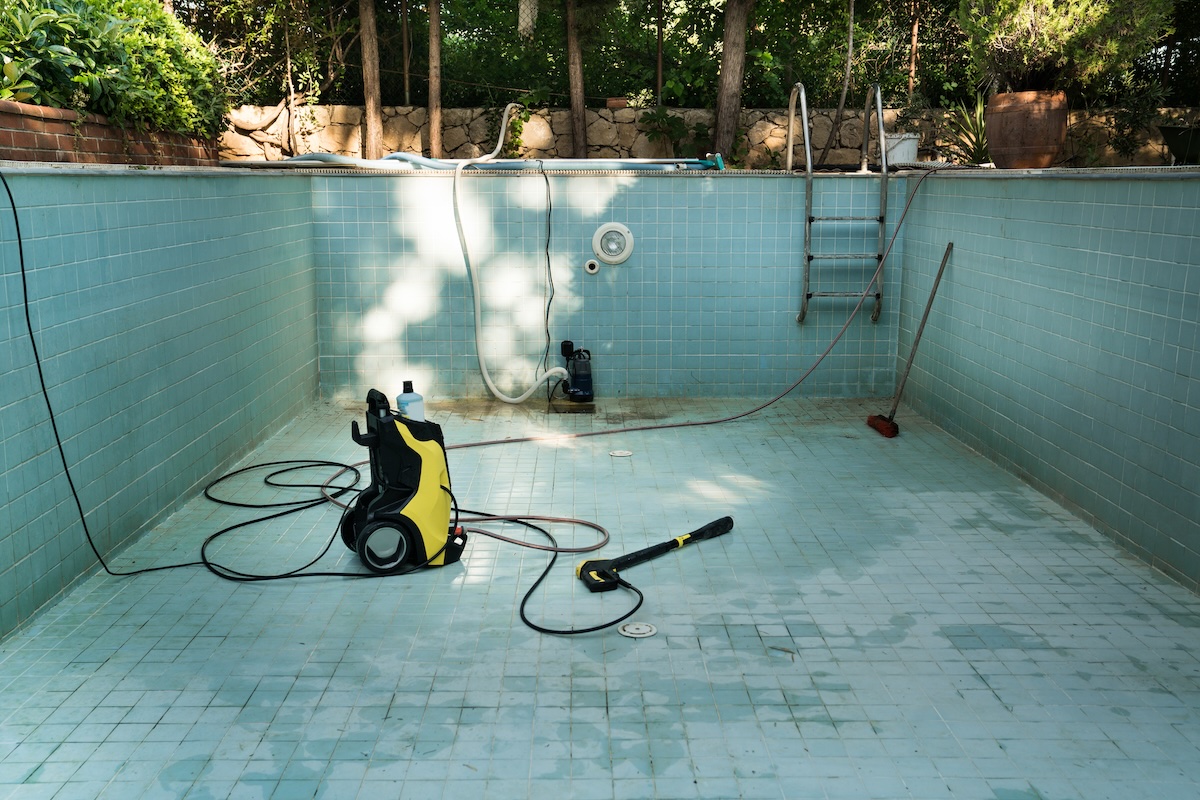Owning a pool in Las Vegas is a luxury, but it comes with responsibilities that differ from those in cooler, wetter regions. One of the most critical tasks that pool owners often overlook is draining. It is not something you do monthly or even annually in most cases, but it must be done at the right time and for the right reasons. In Las Vegas, where water is scarce and evaporation is extreme, draining your pool requires careful consideration, proper timing, and adherence to local regulations.
This guide will help you understand when to drain your pool, why it needs to happen, and how often it should be done in the unique climate of Southern Nevada.
Why Pool Water Needs to Be Replaced
Pool water does not last forever. Over time, water chemistry becomes harder to manage, even if the water looks clean. As pool water ages, minerals, chemicals, and organic matter accumulate. While filtration and chemical treatments help manage these issues, they cannot remove everything. Eventually, you will reach a point where the only effective solution is to start over with fresh water.
In Las Vegas, there are three primary water chemistry issues that lead to the need for draining:
-
Total dissolved solids
-
Calcium hardness
-
Cyanuric acid buildup
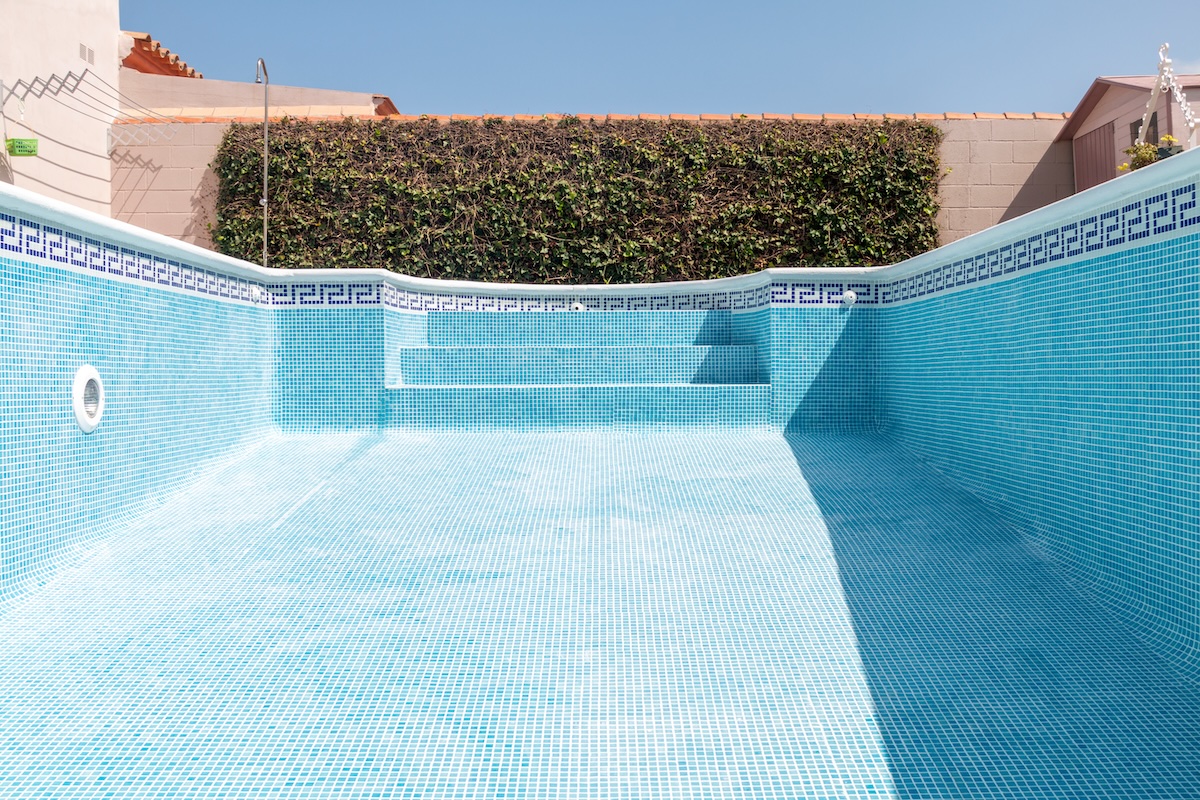
Total Dissolved Solids
Total dissolved solids, or TDS, include anything that remains in the water after evaporation, such as salts, metals, organic contaminants, and chemical residues. Las Vegas has high evaporation rates, which accelerates the concentration of these solids. As TDS rises, your ability to balance chlorine, pH, and other elements becomes more difficult. When TDS climbs too high, often around 1500 parts per million above your tap water’s level, the only solution is to partially or completely drain the pool.
Calcium Hardness
Las Vegas tap water is naturally high in calcium. As water evaporates and is replaced, calcium accumulates in the pool. When calcium hardness levels exceed 1000 parts per million, scaling becomes a problem. Scale can form on tile, plaster, and inside your filtration equipment. This damages surfaces and shortens the life of your system. Chemical treatment cannot remove calcium once it is in the water. Draining is the only effective option.
Cyanuric Acid Saturation
Many pool owners in Las Vegas use chlorine tablets that contain cyanuric acid, or stabilizer. This compound helps prevent chlorine from breaking down in sunlight. However, over time, cyanuric acid accumulates. High levels reduce chlorine’s effectiveness, making it harder to sanitize the pool. When cyanuric acid reaches excessive levels, usually over 100 parts per million, it must be reduced through water replacement.
The Las Vegas Climate Effect
The desert environment accelerates all the problems mentioned above. High heat leads to more evaporation, which increases the concentration of minerals and chemical byproducts. Pools used frequently during summer months also receive more chemical input, further pushing levels upward. Additionally, the intense sun and dry air increase the stress on plaster and finishes when the pool chemistry is off.
Pools in cooler climates may not need draining for seven to ten years, but in Las Vegas, the timeline is shorter.
Standard Draining Frequency
For most pools in Las Vegas, a full drain and refill is needed every three to five years. However, this is not a rule that applies in all situations. Your pool may require more frequent draining if it has high swimmer load, excessive use of stabilizer-containing chlorine, or is experiencing scaling or cloudy water that cannot be cleared through normal methods.
Situations that may require more frequent draining:
-
Calcium hardness over 1000 ppm
-
TDS exceeding 2000 ppm
-
Cyanuric acid over 100 ppm
-
Severe or recurring algae blooms
-
Surface scaling or discoloration
-
Changes in plaster color or texture
-
Equipment strain from excessive mineral buildup
Testing your water regularly is the best way to determine when draining is needed. Most pool supply stores in Las Vegas offer free water testing. Use this to track calcium, TDS, and cyanuric acid over time.
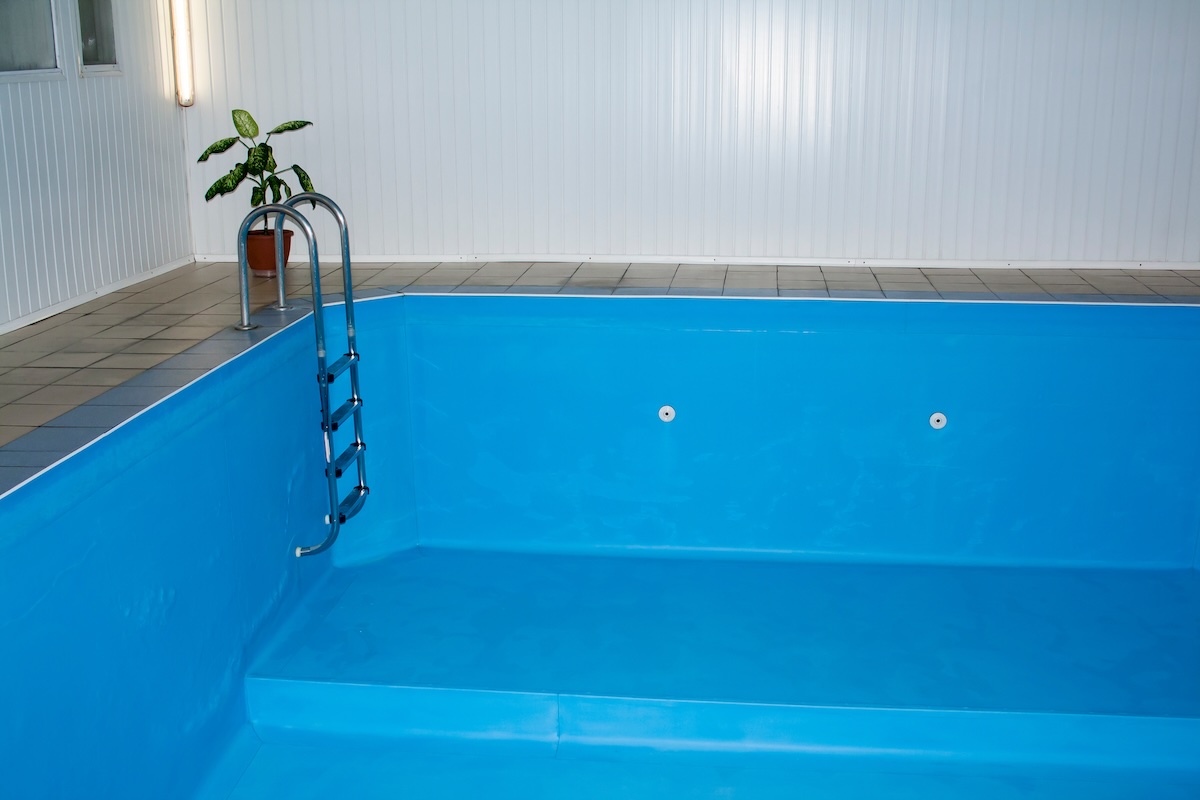
Seasonal Timing Matters
Do not drain your pool during the hottest months of the year. The heat in Las Vegas can exceed 110 degrees in summer, and an empty pool in direct sunlight can suffer permanent damage. Plaster and other surfaces can crack, discolor, or peel when exposed without water to shield them from the sun.
Ideal times to drain your pool:
-
Early spring
-
Late fall
During these periods, temperatures are more moderate, which reduces the risk of damage to pool surfaces. Avoid draining when rain is forecast, as sudden downpours can flood the area or overflow drainage systems.
If you must perform urgent maintenance or repairs during summer, consider partial drains only, or contact a professional who can take extra precautions to protect the pool structure.
Legal and Safe Draining Procedures
In Las Vegas, you cannot drain pool water into the street, storm drains, or alleyways. Doing so is a violation of local water codes and can result in fines. Pool water must be drained directly into the sanitary sewer system so it can be properly treated.
Steps to safely and legally drain your pool:
-
Turn off all power to the pool equipment at the breaker.
-
Turn off any automatic fill devices.
-
Locate the sanitary sewer clean-out port on your property, usually found near the house or in a flower bed.
-
Use a submersible pump to move water from the deepest part of your pool into the clean-out port.
-
Monitor flow carefully to avoid backups in your home’s plumbing system.
-
If backflow occurs into indoor drains, stop immediately and contact a plumber.
-
Once the pool is empty, refill it promptly to avoid sun damage.
-
Test the new water daily for a week and adjust chemical levels as needed.
Do not attempt to drain your pool into a septic tank. Septic systems cannot handle the volume of pool water and will overflow, causing hazardous conditions and expensive damage.
If your pool is connected to an integrated sewer connection, refer to your pool builder’s manual or contact the contractor for exact instructions.
Partial Drains Can Help
Not every situation requires a full drain. If your only issue is cyanuric acid saturation or a moderate TDS level, a partial drain and refill may be sufficient. This method involves removing a portion of the water, often around 25 to 50 percent, and replacing it with fresh tap water.
Partial draining is also a good approach in warm weather when full draining would risk sun damage. Keep in mind that partial draining will not resolve high calcium hardness or severe contamination.
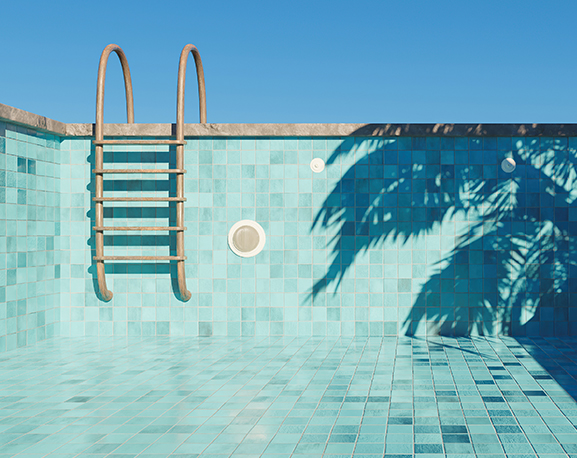
What About Saltwater Pools
Saltwater pools offer some convenience, but they do not eliminate the need for draining. In fact, they often accelerate the need. Salt contributes to the total dissolved solids in the pool, and the cells used to generate chlorine create byproducts that accumulate over time.
Saltwater pools in Las Vegas typically require draining every two to three years. Monitor your TDS, stabilizer, and calcium levels just as closely as you would in a chlorine pool.
Consider Water Recycling Services
Some companies offer mobile pool water recycling through reverse osmosis filtration. These systems can remove TDS, stabilizer, and other contaminants without draining the pool completely. This option is more expensive than traditional draining but uses less water and reduces risk to the pool shell.
However, not all issues can be resolved with recycling alone. If your pool has visible scale, algae, or plaster damage, fresh water replacement is often still the best solution.
Best Practices to Extend Time Between Drains
You can extend the life of your pool water by following several maintenance habits:
-
Use unstabilized chlorine instead of tablets when possible
-
Routinely backwash or clean filters to remove contaminants
-
Test water at least twice a month
-
Avoid overuse of algaecides, shock, and specialty chemicals
-
Use a pool cover to reduce evaporation
-
Keep up with brushing and vacuuming to remove buildup
These practices help reduce the speed at which minerals and chemicals accumulate, allowing you to go longer between major water replacements.
Closing Advice for Las Vegas Pool Owners
Draining your pool is not about following a set schedule. It is about knowing what is in your water and how your pool is responding to the climate, chemicals, and time. In Las Vegas, most pools need to be drained every three to five years, but you should rely on testing to make that decision, not guesswork.
Avoid draining during summer, always use the sanitary sewer system, and never rush the process. Refill as quickly as possible and rebalance your chemicals immediately. If you are unsure or uncomfortable draining the pool yourself, hire a licensed pool service to do it right.
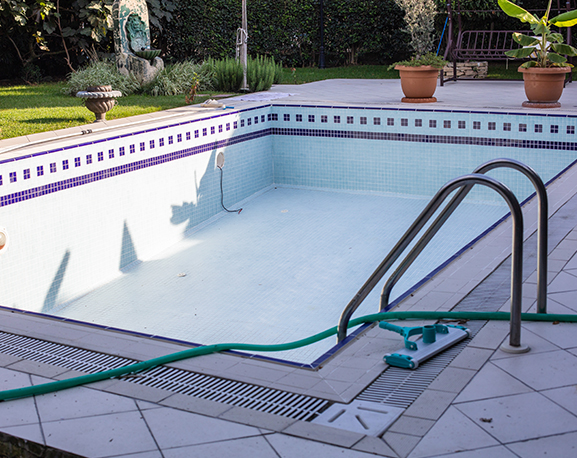
Take the Guesswork Out of Draining
If you are unsure how to test your water or what your numbers mean, talk to a local expert before making costly decisions. A simple consultation with a professional can save you thousands in repairs and prevent unnecessary fines. Know your numbers, plan ahead, and keep your Las Vegas pool in top condition with water that works for you.
At Big League Pool Cleaners, we handle every aspect of pool maintenance with precision and care. Whether you need a full drain and refill, help identifying a chemical imbalance, or just want peace of mind that your pool is safe and balanced, we’re ready to step in. We specialize in Las Vegas pool systems and understand exactly how to manage the demands of desert conditions.
Let us take the hassle out of draining and maintenance. Contact Big League Pool Cleaners today to schedule a visit or request a water chemistry analysis. We’ll help you protect your investment and keep your pool ready for every season.

